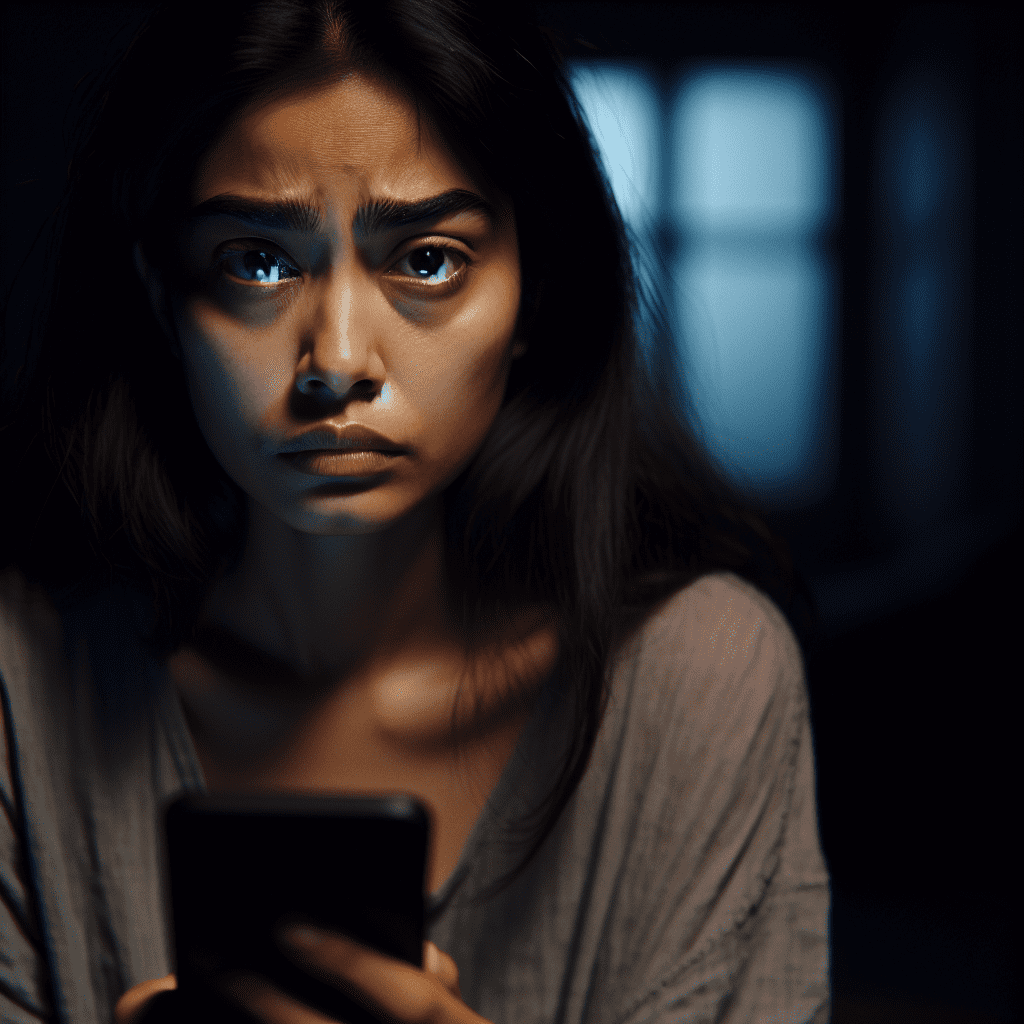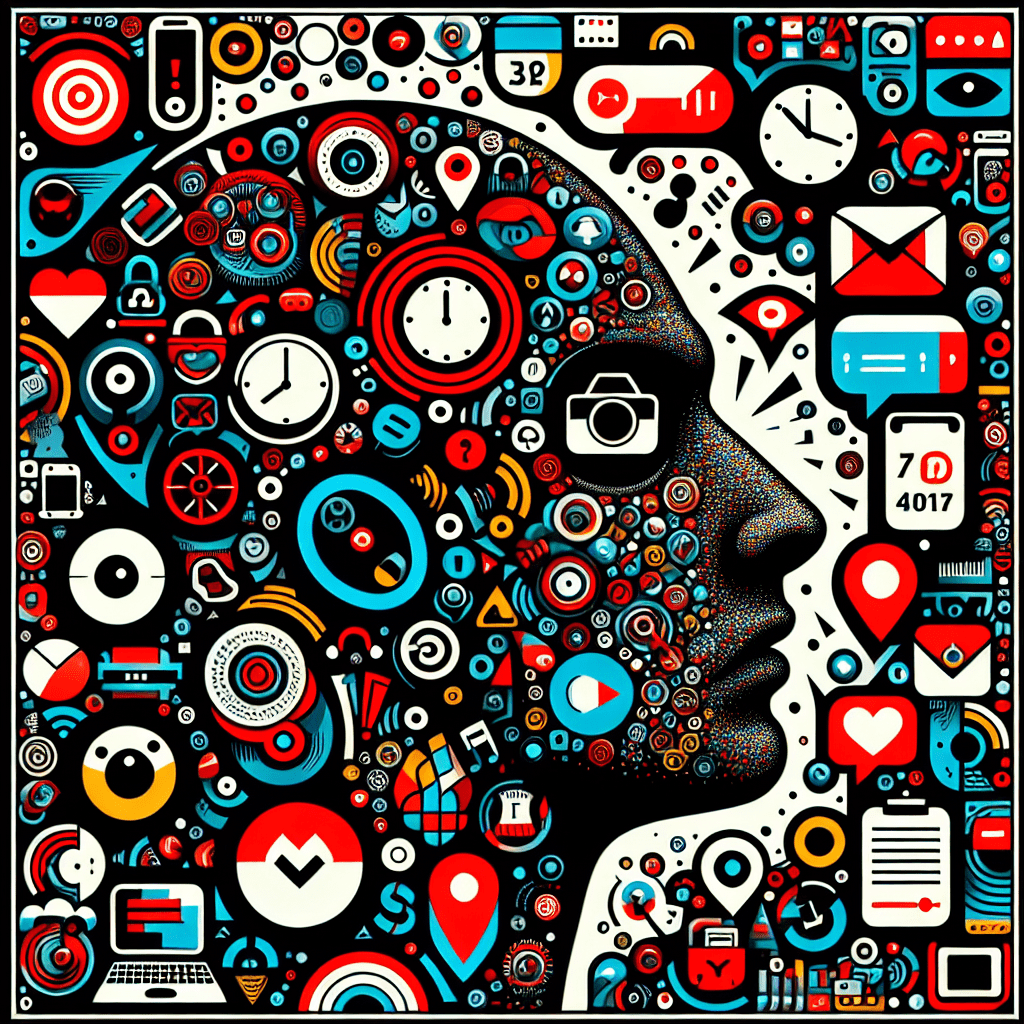Table of Contents
In the blink of an evolutionary eye, our species has transitioned from the savanna to the screen, from foraging for sustenance to scrolling for stimulation. The digital revolution, once hailed as a great equalizer and connector, has brought with it a new set of challenges—a pervasive sense of anxiety, distraction, and disconnection. In our hyper-connected world, we find ourselves grappling with the implications of being “always on,” struggling to balance the benefits of technology with the toll it takes on our mental well-being.

The Paradox of Connection
One of the great ironies of our digital age is that the very tools designed to bring us closer together often leave us feeling more isolated than ever. Social media platforms, once celebrated for their ability to connect us across vast distances, have become breeding grounds for comparison, envy, and self-doubt. We curate our online personas with meticulous care, presenting an idealized version of ourselves to the world while secretly yearning for authentic connection.
As MIT professor Sherry Turkle observes in her book “Reclaiming Conversation,” “We are being silenced by our technologies—in a way, ‘cured of talking.’ These silences—often in the presence of our children—have led to a crisis of empathy, a crisis of intimacy, a crisis of solitude, and a crisis of self-reflection.”
The Attention Economy
In the digital realm, attention is currency, and the competition for our eyeballs has never been fiercer. Tech giants and media conglomerates vie for our focus, employing ever-more sophisticated algorithms to keep us engaged, entertained, and, above all, consuming. The result is a fragmented and distracted populace, forever chasing the next dopamine hit while struggling to maintain focus on the tasks and relationships that truly matter.
This constant battle for our attention has far-reaching implications, from declining productivity and creativity to the erosion of civil discourse and democratic institutions. As former Google design ethicist Tristan Harris warns, “We’re training a whole global generation to spend their lives being distracted by little buzzes and red dots and pop-up screens and notifications.”

The Blurring of Boundaries
In the always-on era, the lines between work and leisure, public and private, online and offline have become increasingly blurred. The smartphone, once a symbol of freedom and mobility, has become a digital tether, forever binding us to the demands of the workplace and the expectations of our social networks. We find ourselves checking emails at the dinner table, responding to notifications during family outings, and scrolling through feeds late into the night.
This constant connectivity has taken a toll on our mental health, contributing to rising levels of stress, anxiety, and burnout. A 2018 Gallup study found that 23% of employees reported feeling burned out at work very often or always, while an additional 44% reported feeling burned out sometimes. The pressure to be perpetually available and responsive has left us with little time for rest, reflection, and genuine human connection.
The Quest for Authenticity
Amidst the noise and clutter of the digital landscape, there is a growing hunger for authenticity, for experiences and interactions that feel genuine and unfiltered. We see this in the rise of “digital detox” retreats, in the popularity of analog hobbies like vinyl record collecting and film photography, and in the growing emphasis on mindfulness and presence in both personal and professional contexts.
This quest for authenticity is not a rejection of technology per se, but rather a recognition of the need for balance and intentionality in our digital lives. It is a call to reclaim our agency, to be more mindful of how we spend our time and attention, and to cultivate a healthier relationship with the devices and platforms that have become so integral to our daily existence.

Towards a More Humane Technology
As we grapple with the challenges of the always-on era, there is a growing recognition of the need for a more humane and ethical approach to technology. This means designing products and platforms that prioritize user well-being over engagement metrics, that respect privacy and agency, and that foster genuine human connection rather than superficial interaction.
It also means cultivating a new set of digital literacies and habits, both as individuals and as a society. We must learn to be more mindful of our screen time, to set boundaries around our availability, and to carve out sacred spaces for rest, reflection, and face-to-face interaction. We must also advocate for policies and practices that hold tech companies accountable for the social and psychological impacts of their products.

Conclusion
The anxiety of always on is a symptom of a society in transition, struggling to adapt to the rapid pace of technological change. It is a reminder that our digital tools, for all their benefits, come with hidden costs—to our attention, our well-being, and our capacity for genuine human connection.
As we navigate this new landscape, it is crucial that we approach technology with intentionality and care, that we prioritize our mental health and social bonds, and that we work towards a future in which our devices serve us, rather than the other way around. Only then can we hope to reap the full benefits of the digital revolution while mitigating its most pernicious effects.
In the words of author and activist Jenny Odell, “In a time that demands action, distraction appears to be a life-and-death matter. When the proverbial house is burning, I think most of us would agree that it’s better to do something about it than to fuss about organizing the bookshelves. But the key is what that something is. Here, I will suggest that the task is not to reflexively oppose or to willfully ignore the attention economy and its demands, but to dwell as much as possible in states of sensitivity and grace.”